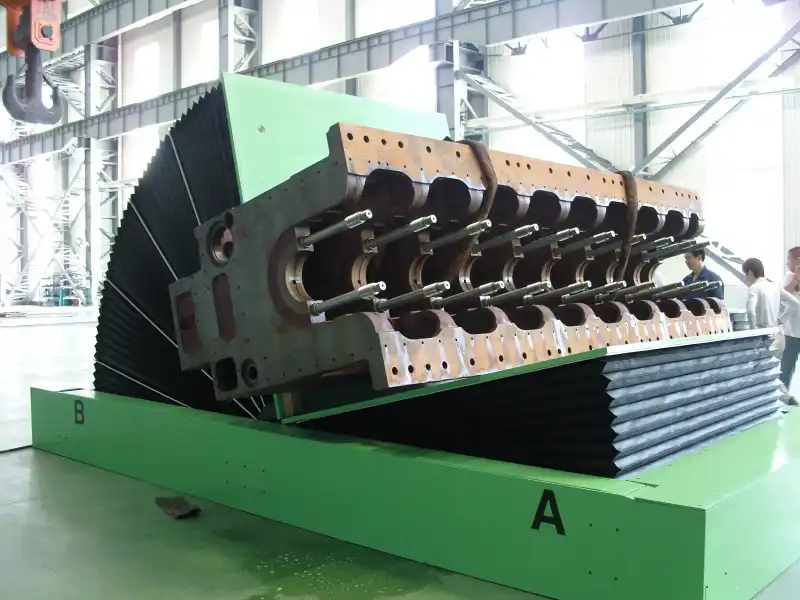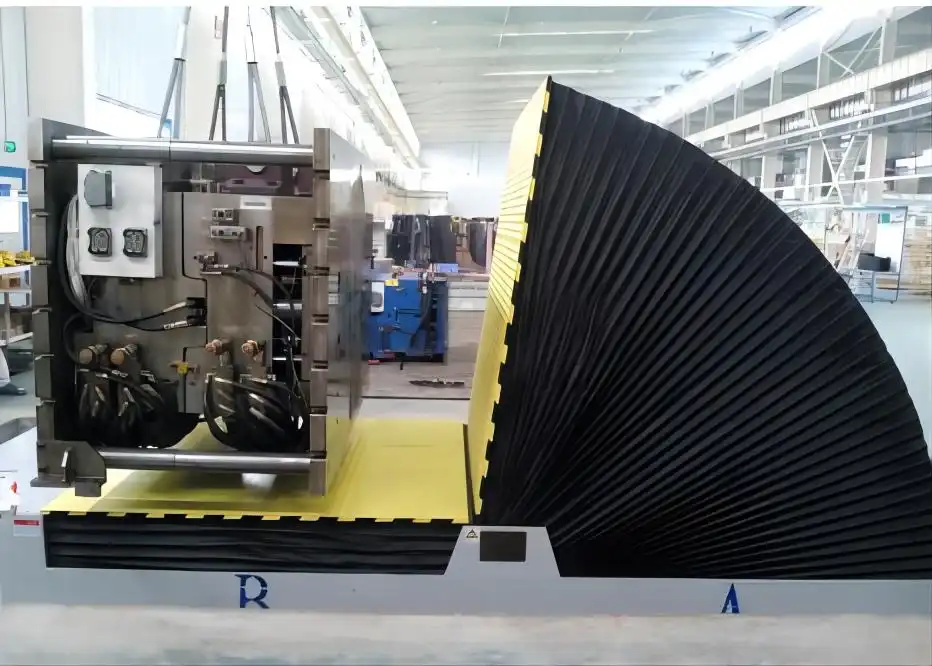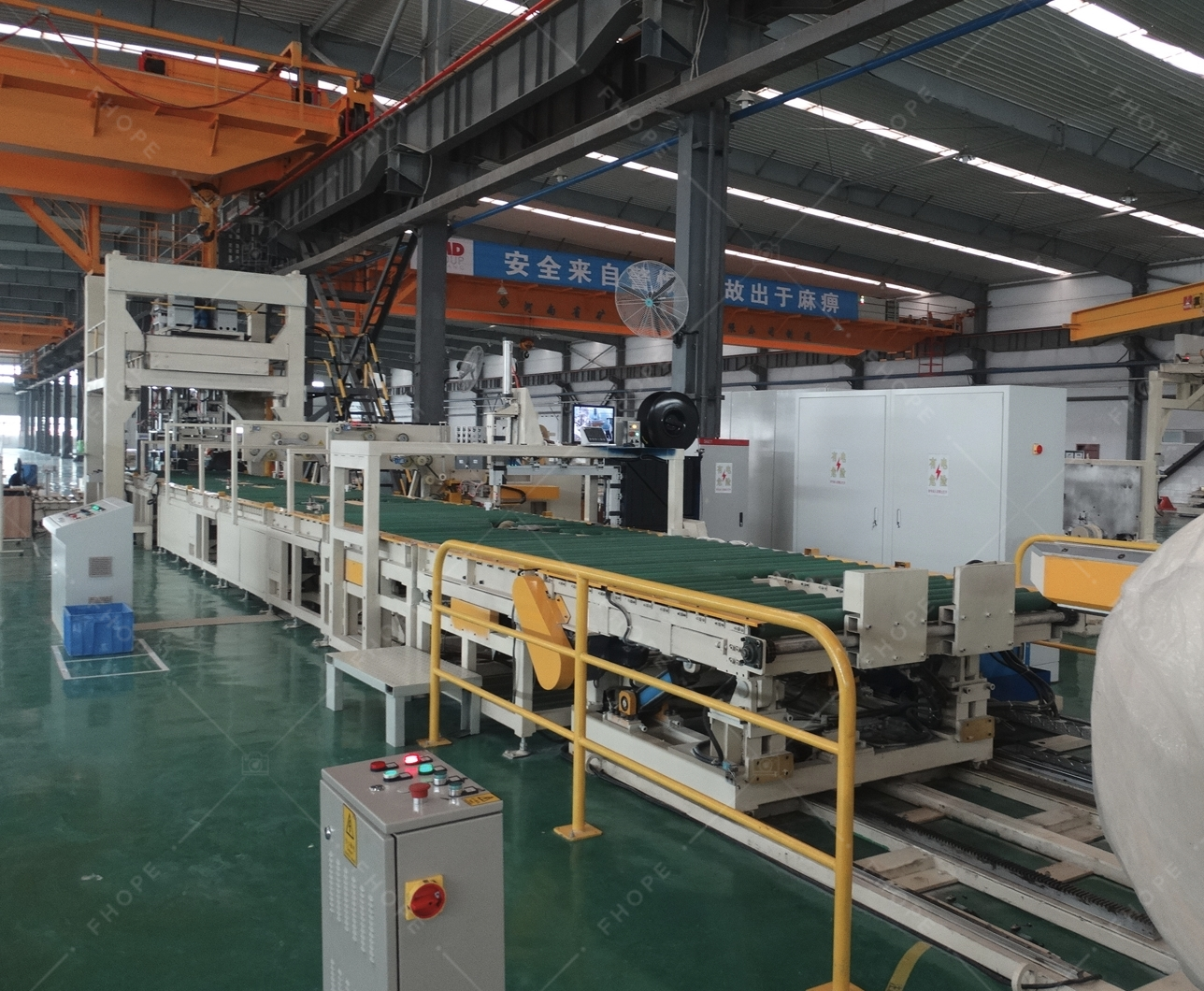Is Renting a Mold Upender the Right Flexible Option for Your Manufacturing?
Struggling with the logistical nightmare of handling heavy, cumbersome molds? Worried about the significant capital investment and ongoing maintenance costs of purchasing a mold upender, especially for fluctuating production needs? Renting specialized equipment like a mold upender offers a powerful, flexible alternative to keep your manufacturing agile and cost-effective.

Yes, renting a mold upender is frequently the right flexible option for manufacturing operations. It provides access to essential mold handling capabilities without the large upfront investment, long-term commitment, or maintenance responsibilities associated with ownership. This makes it ideal for temporary needs, specific projects, trying out equipment, or managing variable production schedules, offering significant operational flexibility and cost-effective solutions compared to outright purchase in many scenarios.
Exploring the rental route can unlock efficiencies you might not have considered. Dive deeper to understand the specific financial, operational, and technological advantages that renting a mold upender can bring to your facility, helping you make an informed decision tailored to your unique manufacturing requirements.
Why Renting a Mold Upender Makes Financial and Operational Sense
Navigating the capital expenditure decisions in manufacturing requires careful consideration of costs versus benefits. When it comes to specialized equipment like mold upenders, the "buy versus rent" dilemma hinges on utilization, project duration, and financial strategy. Renting emerges as a compelling option, particularly when operational flexibility and cost management are paramount.
Renting a mold upender presents strong financial and operational logic, especially for businesses seeking cost-effective solutions and adaptability. It eliminates the substantial capital outlay required for purchase, freeing up funds for other core investments. Operationally, renting provides immediate access to the right equipment for specific jobs or temporary needs, bypassing ownership burdens like maintenance, storage, depreciation, and insurance. This model supports lean principles by allowing manufacturers to scale resources precisely when needed, enhancing overall efficiency and responsiveness without being locked into a fixed asset, making it a smart choice for managing fluctuating workloads or short-term projects.

Analyzing the Cost-Benefit: Rent vs. Buy
Deciding whether to rent or purchase a mold upender requires a thorough analysis beyond the initial price tag. While ownership offers constant availability, it comes with a cascade of associated costs and responsibilities that renting bypasses. Understanding these differences is key to optimizing your equipment strategy and budget allocation.
Upfront Investment:
Purchasing a mold upender demands significant capital upfront. This includes the machine’s cost, plus potential taxes, shipping, and installation fees. This investment ties up capital that could potentially be used for other revenue-generating activities or operational improvements. Renting, conversely, involves predictable, lower periodic payments (daily, weekly, monthly), transforming a large capital expenditure (CapEx) into a manageable operational expenditure (OpEx).
Maintenance and Repairs:
Owned equipment requires ongoing maintenance – routine checks, lubrication, part replacements, and unexpected repairs. This necessitates skilled technicians (in-house or contracted), spare parts inventory, and potential downtime during service. Rental agreements typically place the burden of maintenance and repairs squarely on the rental provider. They deliver professionally maintained, ready-to-use equipment, minimizing your operational disruptions and eliminating unforeseen repair bills.
Depreciation and Resale Value:
Like any capital asset, a purchased mold upender depreciates over time. Its resale value diminishes, impacting your balance sheet. Market fluctuations and technological advancements can further erode its value. Renting eliminates concerns about depreciation and the eventual hassle of selling or disposing of outdated equipment.
Storage and Space:
Mold upenders can be large machines requiring dedicated floor space when not in use. If your facility has space constraints, storing owned equipment, especially if used intermittently, adds an indirect cost. Rental units are simply returned when the need ends, freeing up valuable production or storage space.
Utilization Rate:
This is perhaps the most critical factor. If a mold upender is needed constantly, day-in and day-out, the long-term cost of ownership might be justifiable. However, if the need is project-specific, seasonal, or infrequent, the equipment sits idle much of the time, representing a poor return on investment. Renting allows you to pay for the equipment only when it’s actively contributing to production, aligning costs directly with usage.
Cost Comparison Table:
| Feature | Purchase | Rent |
|---|---|---|
| Initial Cost | High Capital Expenditure (CapEx) | Low Operational Expenditure (OpEx) |
| Maintenance | Owner’s responsibility & cost | Rental provider’s responsibility & cost |
| Repairs | Owner’s responsibility & cost (unpredictable) | Rental provider’s responsibility & cost |
| Depreciation | Asset value decreases over time | Not applicable |
| Storage | Requires dedicated space (owner’s cost) | Returned when not needed; no storage cost |
| Flexibility | Fixed asset; less adaptable | High; easily swap models or return |
| Technology | Locked into purchased model | Access to potentially newer models/technology |
| Best For | High, consistent utilization; long-term need | Low/variable utilization; short-term/project needs |
Ultimately, the cost-benefit analysis often favors renting for manufacturers facing temporary needs, variable production schedules, or those wishing to avoid the complexities and financial burden of asset ownership and maintenance. It provides a predictable, flexible, and often more cost-effective solution for accessing essential mold handling capabilities.
Key Benefits of Mold Upender Rentals for Flexible Manufacturing
In today’s dynamic manufacturing landscape, agility is key. Production demands can shift rapidly, requiring quick adaptation of processes and equipment. Renting a mold upender directly supports this need for flexibility, allowing manufacturers to respond effectively to changing market conditions, project requirements, and operational challenges without being constrained by fixed assets.
Renting a mold upender significantly enhances operational flexibility. It empowers manufacturers to swiftly adjust their mold handling capacity to match fluctuating production volumes or specific project requirements. This agility is crucial for accommodating diverse mold sizes, managing short production runs, covering equipment breakdowns, or scaling operations for temporary contracts, ensuring seamless workflow continuity and responsiveness without the long-term financial commitment or potential underutilization associated with purchasing.
Leveraging Rental Flexibility for Production Agility
The ability to quickly access and deploy the right equipment is a cornerstone of agile manufacturing. Mold upender rentals provide this capability precisely when and where it’s needed, offering several advantages for enhancing production responsiveness:
- Handling Project-Specific Needs: Manufacturing often involves contracts or projects requiring the handling of molds that differ significantly in size, weight, or configuration from standard operations. Purchasing a specialized upender for a single project is often economically unviable. Renting provides the perfect solution, granting temporary access to the exact type of upender needed (e.g., higher capacity, specific rotation angle, unique clamping mechanism) for the project’s duration.
- Managing Fluctuating Demand: Seasonal peaks, cyclical market trends, or large one-off orders can strain existing mold handling capacities. Instead of investing in permanent equipment that might sit idle during slower periods, renting allows manufacturers to scale up their capabilities temporarily. This ensures production targets are met during peak times without over-investing in assets.
- Prototype Development and Short Runs: When developing new products or fulfilling orders for small batches, the mold handling requirements might be temporary or uncertain. Renting an upender allows manufacturers to support these activities without committing to a purchase before the long-term viability or requirements are fully established.
- Bridging Equipment Gaps: Unexpected downtime due to the breakdown or scheduled maintenance of an owned mold upender can halt production. Having a reliable rental partner allows manufacturers to quickly source a temporary replacement unit, minimizing disruption and maintaining workflow continuity. This acts as an effective risk mitigation strategy.
- Supporting Lean Manufacturing: Lean principles emphasize minimizing waste, including the waste of underutilized capital assets. Renting equipment aligns perfectly with this philosophy by ensuring resources are deployed (and paid for) only when actively adding value. It avoids tying up capital in owned equipment that isn’t consistently required.
- Testing New Technologies or Processes: Renting offers a low-risk opportunity to trial different types or brands of mold upenders. If considering a purchase, renting allows hands-on evaluation in the actual production environment before making a significant investment. It also facilitates testing new workflow configurations that incorporate an upender.
By leveraging rental options, manufacturers gain significant strategic advantages. They can bid on a wider range of projects, react faster to market opportunities, manage operational risks more effectively, and maintain leaner, more cost-efficient operations overall. Rental flexibility translates directly into enhanced production agility.
Accessing the Right Technology and Avoiding Maintenance Burdens
Is your current mold handling equipment showing its age? Concerned about the downtime and costs associated with maintaining complex machinery? Keeping up with technology and managing maintenance are significant challenges in manufacturing. Renting offers a straightforward solution to both.
Rental providers typically supply modern mold upenders equipped with current safety features and operational efficiencies. A major advantage is that the rental company assumes full responsibility for all maintenance, inspections, and repairs. This relieves your business from the significant, often unpredictable, costs and labor associated with equipment upkeep, ensuring reliable performance and freeing up your internal resources.
The Advantage of Professionally Maintained Rental Equipment
Opting for rental mold upenders provides distinct advantages related to equipment condition, technology access, and freedom from maintenance responsibilities, directly impacting safety, efficiency, and your bottom line.
Eliminating Maintenance Headaches:
Owning equipment means managing its entire lifecycle, including preventative maintenance schedules, diagnostics, sourcing parts, and performing repairs. This requires dedicated personnel time, technical expertise, and budget allocation. Unexpected breakdowns can lead to costly emergency repairs and production stoppages. With rentals, this entire burden shifts to the provider. They handle routine servicing based on manufacturer recommendations and respond quickly to any operational issues, often providing replacements if a repair is lengthy. This ensures higher equipment uptime and predictable operating costs.
Ensuring Safety Compliance:
Reputable rental companies adhere to strict maintenance and inspection protocols to ensure their equipment meets or exceeds safety standards (e.g., OSHA regulations in the US). Mold upenders involve significant forces and heavy loads, making safety paramount. Rented equipment is typically inspected, tested, and certified before delivery, reducing the risk associated with operating potentially aging or improperly maintained owned machinery. This commitment to safety protects your workforce and helps maintain compliance.
Accessing Current Technology:
The rental market is competitive, incentivizing providers to update their fleets regularly. Renting often gives you access to mold upenders with newer technology than you might own. This can include advanced control systems for smoother operation, enhanced safety interlocks, improved energy efficiency, or features designed for specific types of molds. Accessing this technology without purchasing it allows you to benefit from improved performance and safety features immediately.
Try Before You Commit:
If you are considering adopting newer mold handling technology or different types of upenders, renting provides an invaluable, low-risk trial period. You can evaluate the equipment’s performance, ease of use, and integration into your workflow within your actual production environment before making a long-term capital investment decision.
Maintenance & Technology Comparison Table:
| Aspect | Owned Equipment | Rented Equipment |
|---|---|---|
| Maintenance Duty | Owner responsible for scheduling & execution | Rental provider responsible |
| Maintenance Costs | Variable and potentially high (parts, labor, downtime) | Included in rental fee (predictable) |
| Repair Responsibility | Owner covers all repair costs and logistics | Rental provider covers repairs; may offer replacement |
| Safety Inspections | Owner’s responsibility to ensure compliance | Provider ensures equipment meets safety standards |
| Technology Access | Limited to the purchased model’s features | Potential access to newer models & features |
| Downtime Risk | Higher risk during maintenance/repair | Lower risk; provider support & potential replacement |
Choosing to rent shifts the focus from equipment upkeep to core manufacturing activities. It guarantees access to reliable, safe, and potentially more advanced mold upenders while simplifying operations and reducing financial uncertainty associated with maintenance and technological obsolescence.
Choosing the Right Mold Upender Rental Partner
Selecting the right company for your mold upender rental is as crucial as deciding to rent in the first place. A reliable partner ensures you get well-maintained equipment delivered on time, backed by responsive support. An unreliable provider, however, can lead to delays, breakdowns, and operational headaches, negating the benefits of renting.
Choosing a dependable rental partner is vital for a successful rental experience. Key factors include the provider’s inventory range and equipment condition, their maintenance standards, transparent rental agreements, on-time delivery and pickup reliability, and the availability of knowledgeable customer support. A good partner understands manufacturing needs and ensures the rented mold upender integrates smoothly and safely into your operations, minimizing downtime and maximizing productivity, truly providing a cost-effective solution. Look for providers with a proven track record, particularly those experienced with industrial or manufacturing clients. Assess their fleet – do they offer various capacities and types of mold upenders suitable for your specific needs? Ensure their equipment undergoes rigorous inspection and maintenance routines; don’t hesitate to ask about their service protocols. Clear, comprehensive rental contracts are essential, outlining responsibilities, fees, insurance requirements, and rental duration terms. Timeliness is critical in manufacturing; confirm their ability to meet delivery and pickup schedules consistently. Finally, evaluate their customer support – are they easily reachable? Do they offer technical assistance or troubleshooting if issues arise during the rental period? A partner who provides well-maintained equipment reliably and supports you throughout the rental term transforms renting from a simple transaction into a strategic operational advantage, reinforcing the value of temporary needs fulfillment and operational flexibility.
Conclusion
Deciding whether to rent a mold upender comes down to balancing cost, flexibility, and operational needs. Renting offers compelling advantages, particularly for manufacturers facing variable production demands, short-term projects, or those seeking to avoid the capital outlay and maintenance responsibilities of ownership. It provides immediate access to specialized equipment, enhances operational flexibility, ensures access to maintained and often newer technology, and converts a large potential CapEx into predictable OpEx. By carefully selecting a reliable rental partner, you can seamlessly integrate this essential equipment into your workflow exactly when needed. Considering Equipment rental options like a mold upender can be a strategically sound decision for agile and cost-conscious manufacturing.

